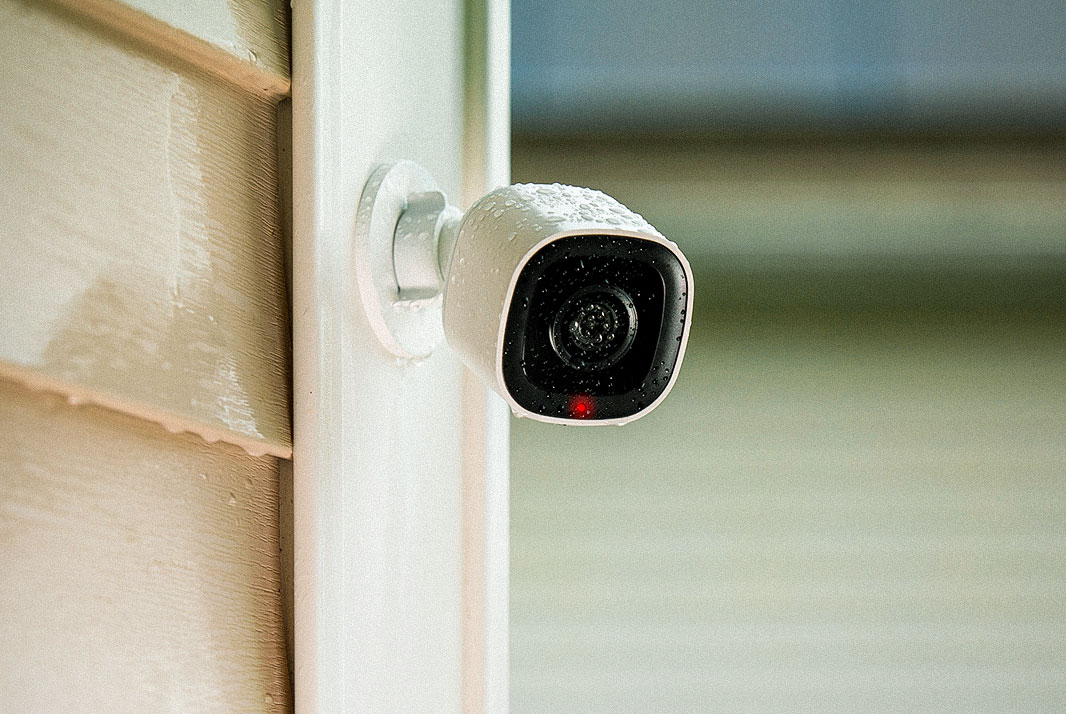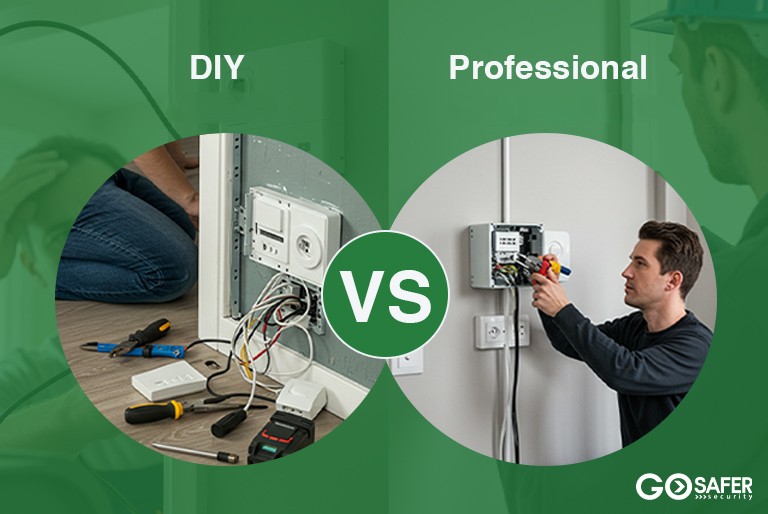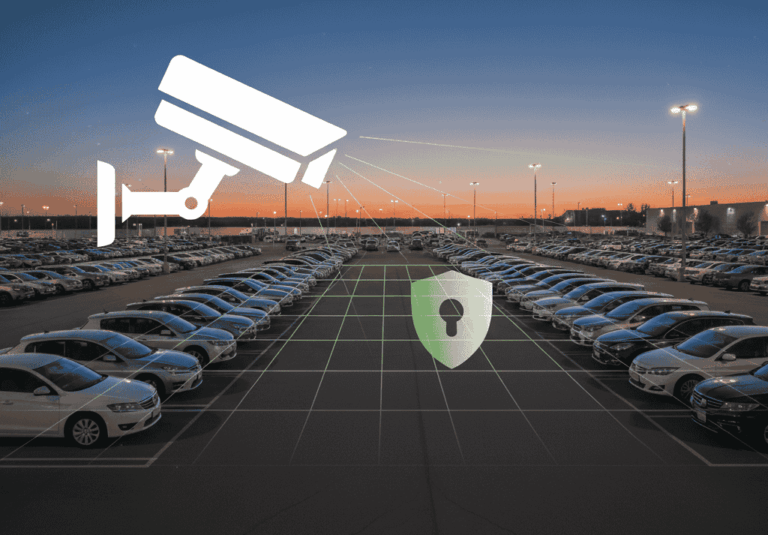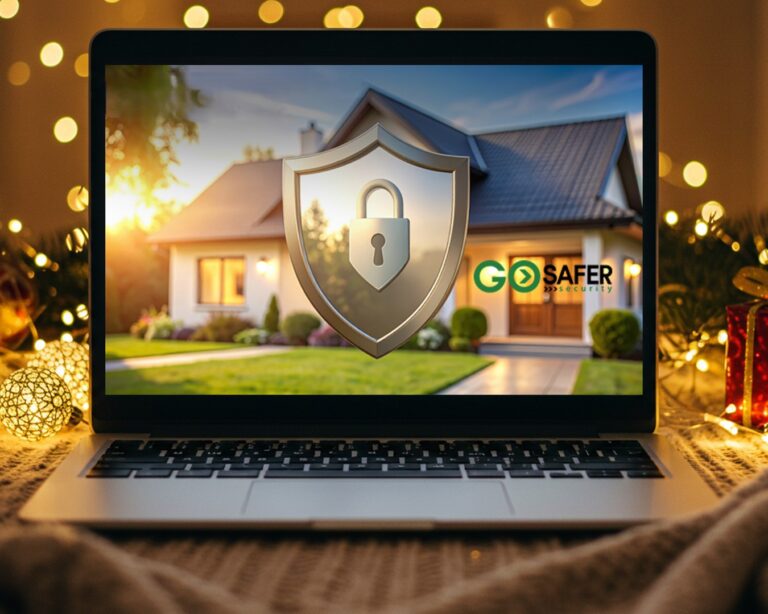You probably think of home security in terms of protection against people. But here’s a thought: what if your biggest threats sometimes come from the sky; freezing cold, heavy snow, thunderstorms, or that muggy heat Maryland throws at you every summer? When your cameras fog up, or your sensors misfire, or power cuts out, the weather’s usually to blame. In this post, I’ll walk you through how Maryland’s ever-shifting climate affects your home security system and how to be ready for it rather than getting caught off guard.
Table of Contents
ToggleTypical Weather Patterns in Maryland
Before digging into details, let’s remind ourselves what Maryland weather is like:
- Winter: Snow, freezing temperatures, ice.
- Spring: Rainy, sometimes soggy, fluctuating temps.
- Summer: Hot, humid, thunderstorms pop-up, occasional tropical storms.
- Fall: Cool, crisp, windy leaves, early freeze, sometimes heavy rain.
And then there are extremes: nor’easters, tropical systems, unexpected ice storms. All of this puts stress on physical gear, electronics, and power infrastructure.
How Different Weather Conditions Affect Security Components
Each part of a security system responds differently when weather turns rough.
- Cameras: Cold can make lenses contract or crack; condensation fogs lenses; heat and humidity corrode housings; storms or snow obscure views or physically damage units.
- Sensors (door/window, motion sensors): Cold can cause plastic parts to become brittle; humidity or water intrusion can cause false alarms; motion sensors outdoors may get triggered by tree branches or swaying objects in wind.
- Alarm systems & wiring: Wiring buried or exposed can be impacted by frost heave; power surges from lightning or grid instability; backup batteries degrade faster in extreme cold or heat.
Indoor vs Outdoor Cameras: Weather Toughness Matters
Indoor and outdoor cameras are built with different expectations. Outdoor models are usually rated for weather (IP ratings- ingress protection), stronger housings, better seals. Indoor cameras often ignore moisture, UV exposure, and hard wind loads. If you use outdoor cameras, take a look at what specs are given. If you want to compare indoor vs outdoor camera resilience, read more in this guide on exploring surveillance options indoor vs outdoor cameras which dives into materials, housings, lens quality, and more.
Battery Life & Power Issues During Harsh Weather
Battery performance suffers when temperatures dip or soar. Cold drains them quickly; heat can damage internal chemistry.
- Keep backup batteries rated for low temperatures.
- Periodically test alarm system batteries.
- Regularly maintain battery terminals, ensure there’s no corrosion or water intrusion.
For more on how to maximize home alarm system battery life tips, there’s a whole resource worth checking out. It offers tricks like temperature-aware placement and charging routines.
Weatherproofing Other Parts of a Security System
The camera or sensor isn’t everything; often the weakest link is wires, connectors, mounting.
- Use sealed cable connectors, weather-proof junction boxes.
- Mount cameras under eaves or small overhangs to reduce direct exposure.
- Use appropriate enclosures (IP66/IP67 etc.) for outdoor parts.
- Check seals & gaskets yearly; UV and heat degrade rubber.
Choosing the Right Surveillance System for Maryland Homes
Because Maryland weather can go from freezing to blistering hot, you want hardware that handles both extremes. Think: corrosion-resistant materials, wide operating temperature range, solid warranties, weather ratings.
If you’re researching options, look into the best surveillance cameras for different types of homes, both older historic houses and newer constructions. These comparisons often include what works best under harsh weather, what mounting is ideal, and what features you need versus what’s optional.
Maintenance Tips Based on Weather Seasons
One size does not fit all when it comes to maintenance.
- Winter prep: Clear snow off cameras, check if icicles are forming, ensure sensors aren’t blocked by ice.
- Spring checks: Inspect for water damage, clean lenses, test seals after winter.
- Summer maintenance: Shield from sun glare, clear insect nests, ensure ventilation around equipment to avoid overheating.
- Fall: Clean gutters so runoff doesn’t splash on cameras, remove fallen leaves, prepare for freeze ups.
Planning Backup Power & Connectivity
Storms in Maryland often knock out power. Without backup, even the best system is useless.
- Use a UPS or battery backup for key devices (base station, cameras, alarms).
- Consider generator backup if you live in more isolated or flood-prone areas.
- For internet connectivity: consider LTE/5G backup so cameras can still send alerts even if broadband goes down.
Installation & Placement Strategies to Combat Weather Challenges
How you mount your security gear matters. A poorly placed camera can be useless.
- Mount cameras under overhangs to shield precipitation.
- Tilt slightly downward so water runs off lens without pooling.
- Avoid direct sun exposure to avoid glare or lens bakeout.
- Ensure that mounting supports are sturdy against wind; loose mounts lead to blurry or misaligned views.
Cost Considerations & Long-Term Reliability
Weather-rated parts often cost more upfront (better housings, insulated cases, IP rated enclosures). But cheap gear can cost more in the long run—replacement, damage, downtime.
Do an honest calculation: initial cost + maintenance + expected lifespan + potential weather-related failures.
Choosing Trusted Local Brands/Installers
When it comes to survival in storms, you want people who’ve been there.
- Trust brands with clear weather ratings, warranties, and good customer reviews in your region.
- Hire installers who understand weather challenges—snow, high humidity, salt exposure (coastal regions).
- Make sure the installer walks you through keeping seals, battery maintenance, and what to do when weather gets extreme.
Example Scenario
Imagine this: a winter nor’easter dumps ice and sleet. Your outdoor camera is pointed skyward and gets coated in ice. Its battery is near its cold limit, so cell-based alerts fail. Snow accumulates, blocking the view. Meanwhile, backup power fails because the generator wasn’t started, and battery terminals are corroded.
What could have prevented this?
- Use rated IP67/68 cameras with lens heat or defrosters.
- Install with downward tilt under cover.
- Maintain battery health and use weather-rated backup.
- Regular winter inspections.
Future Trends: Weather-Resilient Security Tech
Good news—manufacturers are catching up. Expect:
- Cameras with built-in heaters or defrosters.
- More robust enclosures with UV and salt air resistance.
- AI systems that auto-correct visual distortions due to weather (rain, snow blur).
- Improved battery tech for cold weather, better standby modes.
Conclusion & Key Takeaways
Maryland weather can be as unpredictable as it is beautiful. But your home security system doesn’t have to be vulnerable. When you choose weather-rated gear, maintain it seasonally, plan for backup power, and install things wisely, your system can handle snow, sleet, heat, and storms, all without missing a beat. If you spend a little time preparing, you’ll gain a lot of peace of mind.
FAQs
1. Will rain or snow permanently damage outdoor security cameras?
Not usually—if you use cameras rated for outdoor use (IP66 or higher), with weather-sealed housings. But heavy snow or water pooling can obstruct views, so regular cleaning helps.
2. How much does cold weather affect battery-powered sensors and alarms?
Cold reduces battery efficiency significantly. Lithium-ion batteries handle cold better; alkaline ones less so. Keep batteries in rated enclosures, monitor battery levels, and replace aging batteries before winter.
3. Do I need special types of cables or connectors for Maryland’s climate?
Yes—look for UV-resistant, weather-proof connectors. Outdoor cables should have proper insulation and be sealed at junctions. Avoid low-quality wiring that may crack in cold or deform in heat.
4. Can I use indoor cameras outside in lighter weather?
It’s not recommended. Indoor cameras lack sealing, proper housings, and weatherproof ratings. Better to invest in outdoor-rated devices if any exposure to elements is expected.
5. What should I do after a major storm to check my security system?
Inspect cameras and housings for cracks or misalignment. Test all sensors and motion detection. Check backup power sources. Clean lenses if dirt or debris got kicked up. And verify that all alerts are functioning (internet, battery backup, monitoring).







